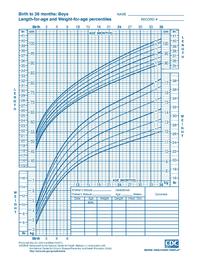
Photo from wikipedia
Learning Objectives: Pharmacologic prophylaxis for the prevention of venous thromboembolism (VTE) in critically ill adults has been proven to reduce the risk of VTE without increasing the risk of clinically… Click to show full abstract
Learning Objectives: Pharmacologic prophylaxis for the prevention of venous thromboembolism (VTE) in critically ill adults has been proven to reduce the risk of VTE without increasing the risk of clinically relevant bleeding (CRB). Critically ill adolescents are also at high risk of VTE, but the risk of CRB is unclear. Given the uncertainty in the net clinical benefit of prophylaxis, the use of prophylaxis against VTE in this population is highly variable. In a post-hoc analysis of the Thrombosis Epidemiology in Ill Adolescents (THEIA) Study, we characterized the epidemiology of CRB in a cohort of critically ill adolescents at high risk of VTE. Methods: Multicenter, prospective cohort study of adolescents receiving cardiopulmonary support in 6 pediatric intensive care units (ICUs). Subjects were monitored for bleeding events until ICU discharge or up to 28 days. Primary outcome measure was development of CRB as defined by the International Society on Thrombosis and Hemostasis. The risk of CRB was expressed as proportion of adolescents with CRB and as rate of CRB per 100 patient-days. Potential risk factors for CRB were also assessed. Results: A total of 88 subjects who were enrolled in the THEIA Study were included in this analysis. Of these, 26 (29.5%) adolescents developed CRB for a rate of 3.7 events per 100 patient-days (95% confidence interval [CI]: 2.5, 5.4 events per 100 patientdays). The most common sites of CRB were intracranial (n=12, 46.2%), gastrointestinal (n=7, 26.9%) and surgical site (n=5, 19.2%). Severity of illness (hazard ratio [HR] per 0.1 increase in risk of death: 1.35; 95% CI: 1.05, 1.74) and admission for trauma or surgery (HR: 2.04; 95% CI: 1.21, 3.44) were positively associated with CRB. In adolescents admitted for trauma or surgery, 16 (61%) developed CRB for a rate of 13.1 events per 100 patientdays (95% CI: 8.0, 21.4 events per 100 patient-days). Age was negatively associated with CRB (HR per 1 year increase: 0.68; 95% CI: 0.58, 0.79). Conclusions: The risk of CRB in critically ill adolescents is higher than previously reported in children and consistent with reports in critically ill adults. Adolescents admitted after trauma or surgery have increased risk of CRB. Our findings inform the design and conduct of a trial of prophylaxis in critically ill adolescents.
Journal Title: Critical Care Medicine
Year Published: 2019
Link to full text (if available)
Share on Social Media: Sign Up to like & get
recommendations!